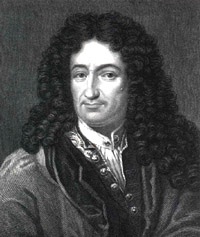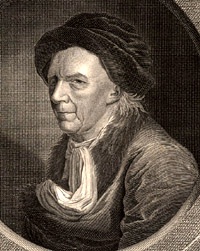- About MAA
- Membership
- MAA Publications
- Periodicals
- Blogs
- MAA Book Series
- MAA Press (an imprint of the AMS)
- MAA Notes
- MAA Reviews
- Mathematical Communication
- Information for Libraries
- Author Resources
- Advertise with MAA
- Meetings
- Competitions
- Programs
- Communities
- MAA Sections
- SIGMAA
- MAA Connect
- Students
- MAA Awards
- Awards Booklets
- Writing Awards
- Teaching Awards
- Service Awards
- Research Awards
- Lecture Awards
- Putnam Competition Individual and Team Winners
- D. E. Shaw Group AMC 8 Awards & Certificates
- Maryam Mirzakhani AMC 10 A Awards & Certificates
- Two Sigma AMC 10 B Awards & Certificates
- Jane Street AMC 12 A Awards & Certificates
- Akamai AMC 12 B Awards & Certificates
- High School Teachers
- News
You are here
Solving First-Order Linear Differential Equations: Three Mini-Primary Source Projects for Differential Equations Students
Calculus, and by extension differential equations, has the (earned?) reputation of just being a plethora of seemingly unrelated techniques. Students often try to memorize their way through the course, because it worked when they needed to learn the plethorae (or plethoras) of unrelated facts in other subjects, such as dates or Latin names or chemical elements or vocabulary words or steps in the Krebs cycle. . . . Almost always this ends badly for them.[1] Organizing the different techniques that can be used to solve particular problems is essential to success, and one of the ways to do that is by utilizing history. E. L. Ince (1891–1941) noted that “the historical value of a science depends not upon the number of particular phenomena it can present but rather upon the power it has of coordinating diverse facts and subjecting them to one simple code” [Ince 1926, p. 529]. The three mini-Primary Source Projects (mini-PSPs) in the series Solving First-Order Linear Differential Equations attempt to do exactly that by examining three different techniques—an opaque one-off change of variables, variation of parameters, and exactness with integrating factors—for solving first-order linear differential equations of the form
\[\frac{dy}{dx} +P(x) y = Q(x).\]
Together, the three PSPs follow the historical story of the search for more general methods for solving such equations by examining works due to Gottfried Leibniz (1646–1716), Johann Bernoulli (1667–1748) and Leonhard Euler (1707–1783).



Gottfried Leibniz (left), Johann Bernoulli (center), and Leonhard Euler (right).
Convergence Portrait Gallery.
The first mini-PSP in the series, subtitled Gottfried Leibniz’s ”Intuition and Check” Method, explains how in 1694 Leibniz solved these equations using a one-off method applicable only to this specific problem. Strictly speaking, Leibniz didn’t even solve the equation, but rather asserted a solution and then showed it worked. Part of his proposed solution will be familiar to the students: it is the standard integrating factor method we teach today.
The second project in the series, subtitled Johann Bernoulli’s (Almost) Variation of Parameters Method, explains how in 1697 Bernoulli provided a method for solving Bernoulli differential equations that reduces to variation of parameters when applied to first-order linear equations. This was decades before Lagrange received credit for the technique. Again, part of Bernoulli’s solution will be the standard integrating factor.
The final mini-PSP in the series, subtitled Leonard Euler’s Integrating Factor Method, explains how in 1763 Euler solved these equations as a special case of exact differential equations by finding an integrating factor. His integrating factor is the same as the one the students would have seen. This project is a bit longer than the others, and it may require a bit more time or advance preparation.
The three projects in the series can be utilized individually, or as a trio. They can all be used early in the course when first-order linear differential equations are first covered. Or, they can be spread out through the semester, utilizing the Bernoulli project as an easy motivation when covering variation of parameters and the Euler project when discussing exactness.
The complete projects are ready for student use:
- Solving First-Order Linear Differential Equations: Gottfried Leibniz’s “Intuition and Check” Method (pdf)
- Solving First-Order Linear Differential Equations: Bernoulli’s (Almost) Variation of Parameters Method (pdf)
- Solving First-Order Linear Differential Equations: Leonard Euler’s Integrating Factor Method (pdf)
The LaTeX source is also available from the author by request. Instructor notes are provided to explain the purpose of each project and guide the instructor through implementation of the project.
The projects in this article mark the thirty-first entry in A Series of Mini-projects from TRIUMPHS: TRansforming Instruction in Undergraduate Mathematics via Primary Historical Sources appearing in Convergence, for use in courses ranging from first-year calculus to analysis, number theory to topology, and more. Links to other mini-PSPs in the series, including 3 additional projects for use in differential equations courses, appear below. The full TRIUMPHS collection also offers three more extensive “full-length” PSPs for use in teaching differential equations.
Acknowledgments
The development of the student projects presented in this article has been partially supported by the TRansforming Instruction in Undergraduate Mathematics via Primary Historical Sources (TRIUMPHS) project with funding from the National Science Foundation’s Improving Undergraduate STEM Education Program under Grants No. 1523494, 1523561, 1523747, 1523753, 1523898, 1524065, and 1524098. Any opinions, findings, and conclusions or recommendations expressed in this project are those of the author and do not necessarily reflect the views of the National Science Foundation.
References
Bernoulli, Johann. 1697. De conoidibus et spaeroidibus quaedam. Solutio analytica æquationis in Actis A. 1695, pag. 553 propositæ (a Fratre Jac. Bernoullio) [On certain conoids and spheroids. An analytic solution to the equation proposed in Acta A., 1695, p. 553 (by my brother, Jacob Bernoulli)]. Acta Eruditorum, Mar. 1697:113–118.
Euler, Leonhard. 1763. De integratione aequationum differentialium (On the integration of differential equations). Novi Commentarii academiae scientiarum Petropolitanae 8:3–63. Reprinted in Opera Omnia, Series 1, Volume 22, pp. 334–394.
Ince, E. L. 1926. Ordinary Differential Equations. London. Reprint, New York: Dover Publications, 1944.
Leibniz, Gottfried. 1694. Letter to l’Hôpital, 27 November 1694. In Mathematische Schriften, Band II, Briefwechsel Zwischen Leibniz, Huygens van Zulichem und dem Marquis de l’Hôspital, edited by C. I. Gerhardt (1850), 255–262. London: D. Nutt.
[1] For example, consider the integral \(\int \frac{x}{1-x^2}dx \). Obviously, we want students to use \(u\)-substitution to attack this problem. However, there is always one student that has memorized “you use trig-substitution when you see \((1-x^2)\).” And perhaps another one who remembers that “when the denominator factors you rewrite as partial fractions” (and still others with more creative, and less correct, cancellations). Unless the techniques are arranged in some order in students’ minds, a one-minute “freebie” problem has turned complicated and stressful. But this problem also gives us the opportunity to place \(u\)-sub, trig-sub and partial fractions in the single context of solving this integral, thereby showing the methods aren’t actually that unrelated.
Adam E. Parker (Wittenberg University), "Solving First-Order Linear Differential Equations: Three Mini-Primary Source Projects for Differential Equations Students," Convergence (March 2024)




